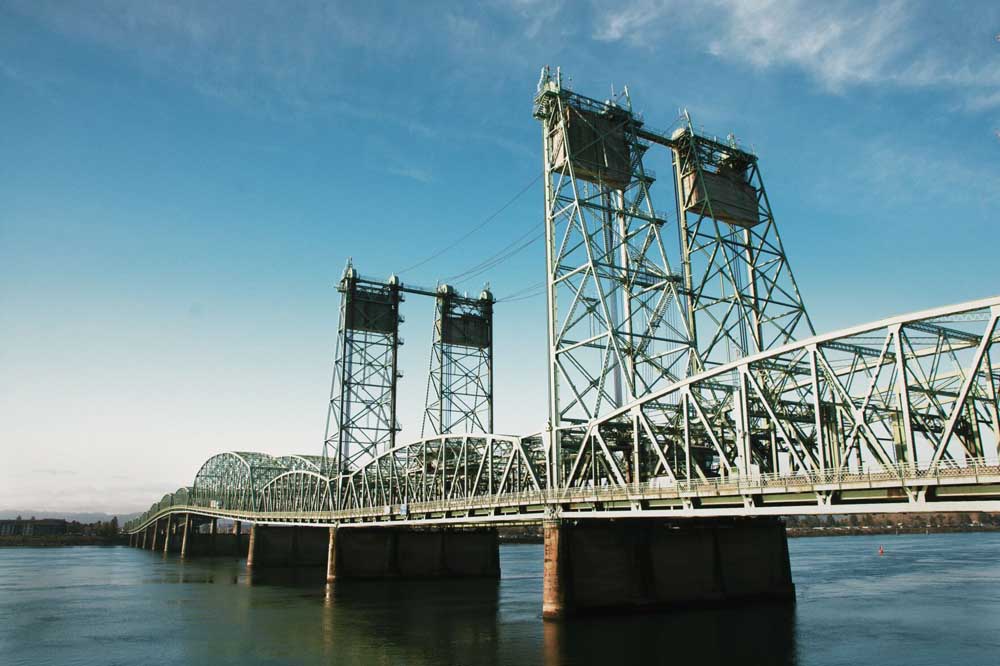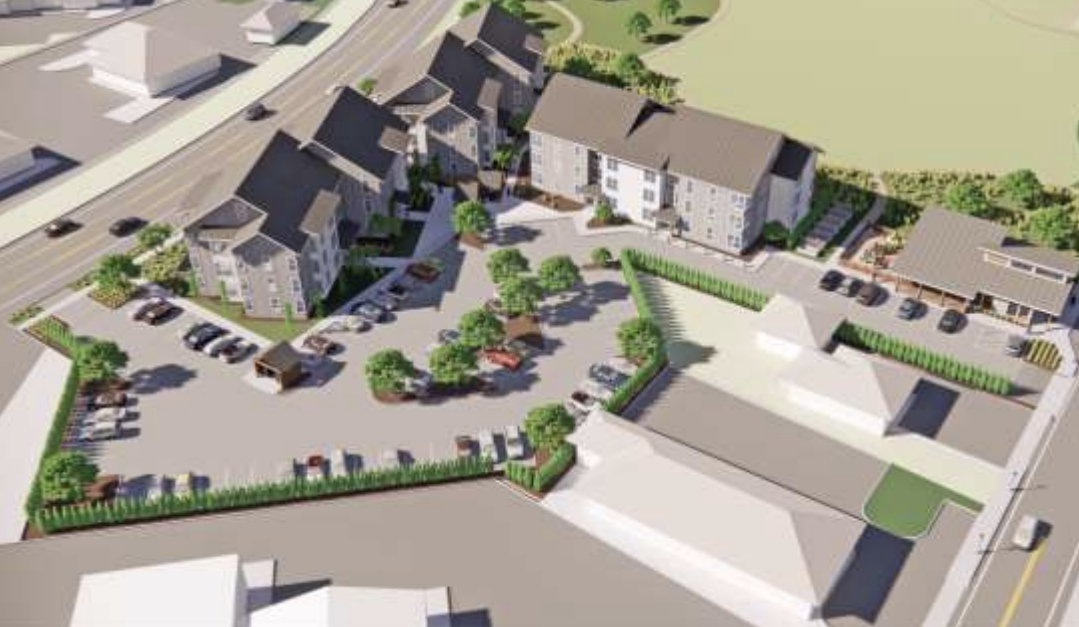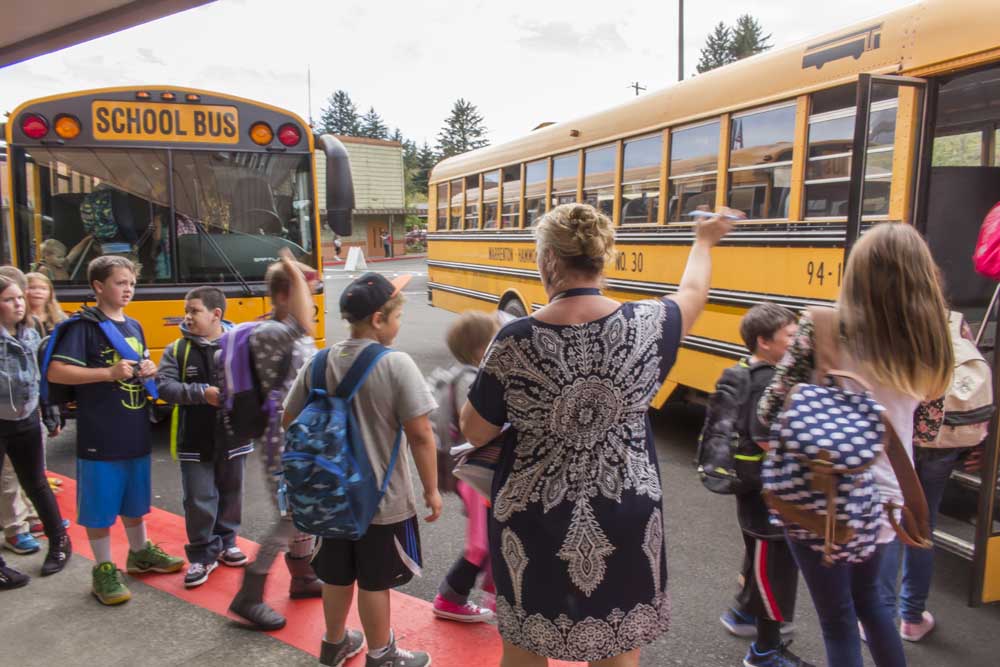Weekend Break: Bridges of the Columbia River
Published 1:00 pm Friday, March 25, 2022

- The Interstate Bridge, which connects Portland and Vancouver.
Bridges are iconic by nature, constructions of metal and concrete that often dominate a landscape. I’ve been charmed by them since I was a child. As a lower Columbian, I’ve been steeped in the lore of the magnificent Astoria Bridge for decades. I’ve read the statistics, heard the stories and driven the span innumerable times. Recently, I’ve started to wonder about the other bridges that cross the Columbia.
One colleague recently asked me how many bridges there are along the river. I had to admit that I had no idea, but just thinking about the concept stirred my sense of wanderlust. I decided I must try to cross them all. So began a late winter quest to chase the blues away by driving across every Columbia River bridge in the United States in just three days.
Just 40 miles upriver from Astoria, the Julia Butler Hanson Bridge at Cathlamet, Washington, is an anomaly. Some don’t consider this bridge to cross the Columbia as it only spans the Cathlamet channel, connecting Cathlamet to Puget Island rather than the main river channel, but I’ll include it anyway. Next, the Lewis and Clark Bridge at Longview, Washington, is familiar to most who travel to Portland.
The channel that runs between Portland and Vancouver, Washington, is the site of the next two bridges: the Interstate Bridge, which carries Interstate 5, and the Glenn L. Jackson Memorial Bridge, which carries Interstate 205. These two bridges account for the greatest amount of traffic of all Columbia crossings. Haggling over a proposed new bridge, dubbed the Columbia River Crossing, has continued for over two decades.
Moving on to the Columbia River Gorge, the scenery dazzles as I cross the Bridge of the Gods at Cascade Locks. Next are the Hood River-White Salmon Interstate Bridge, The Dalles Bridge (which feels like it’s going to crash into The Dalles Dam) and finally the Sam Hill Memorial Bridge, also known as the Biggs Rapids Bridge. These bridges, built with steel grates that amplify the sounds of passing cars, are what some kids in the region once called “buzz bridges.”
East of the gorge, the highway system offers a contrast of pace. On the Oregon side of the Columbia is Interstate 84, the main commercial artery of central Oregon, moving great numbers of vehicles along without crossing a mountain pass. On the Washington side of the river, the two lane State Route 14 winds slowly along the Columbia’s north shore through wine country and pristine grazing land. The pace here is more sedate. Next, the Umatilla Bridge carries travelers on to Kennewick, Pasco and Richland, commonly known as Washington’s Tri-Cities.
Also in this region, the Pioneer Memorial Bridge, sometimes referred to as Blue Bridge, carries U.S. Highway 395; Cable Bridge, a flamboyant design, carries State Route 397. The latter catches the eye from afar, especially at night, at a spot where the Columbia nearly doubles in volume from its confluence with the Snake River.
From this point on, reaching the spans in order upstream requires a lot of backtracking, which I’m loath to do. Major roads don’t always follow the river, so a little zig-zagging is required. Following State Route 240 to the northwest near Hanford Nuclear Site, The Vernita Bridge at Desert Aire has a special, peaceful aura for me. Crossing at Hanford Reach National Monument, this bridge spans the only U.S. section of the Columbia River that is free flowing. Above Bonneville Dam, the river is essentially a series of lakes impounded by dams. This place just feels less disturbed than the rest. I camped here near a pioneer cemetery.
Like most of the crossings, the Vantage Bridge on Interstate 90 is surrounded by beautiful views. Passing the popular Gorge Ampitheatre, the bridge continues on to Spokane, Washington. The Apple City of Wenatchee, Washington, is home to two crossings, the George Sellar Bridge, which carries State Route 285, and the Richard Odabashian Bridge, which carries U.S. Highway 2. The Old Wenatchee Bridge has the distinction of being the first automobile bridge to cross the Columbia. Today, it shares the span with a gigantic pipe supplying water to apple orchards on the east side, but no longer carries traffic.
Just upstream from Chelan Falls, U.S. Highway 97 crosses the river at Beebe, Washington. This bridge and the next one at Brewster, Washington, were built privately by apple companies and later sold to the state. Along this stretch, apple orchards cover the hills around the river. Both the Grand Coulee Bridge at Coulee City, Washington, and the Bridgeport Bridge, just north, were created to facilitate the construction of dams. Both offer some spectacular views.
Just two more bridges remain before the Columbia crosses into Canada. These are the Kettle Falls Bridges, once built to raise State Route 2, U.S. Highway 395 and the Kettle Falls International Railway from rising waters after the opening of Grand Coulee Dam.
As I roll into Northport, Washington, on the third night of my jaunt across the Northwest, the last bridge of my journey looms over State Route 25. Northport shares one trait with Astoria: both were once boat building towns in their early days.
After my three day journey has come to an end, I am tired and ready for a stop. I am thirsty, hungry and sleep deprived when I arrive at Kuk’s Tavern in town. At 121 years old, the tavern is Northport’s oldest building and retains a great deal of history. Here, I feel right at home as I attack a giant burger. An hour passes before the bartender taps me on the shoulder. “Hey pal, wake up, I gotta close this place,” he said.





